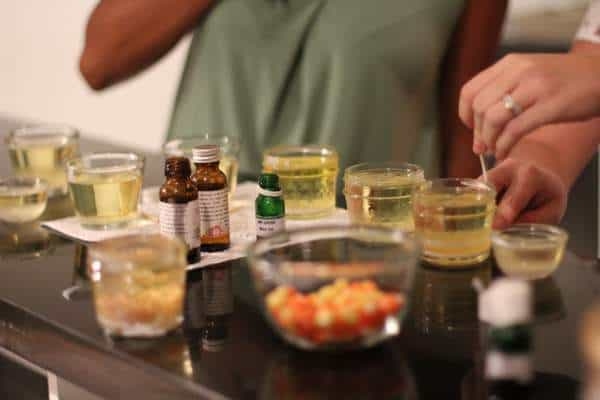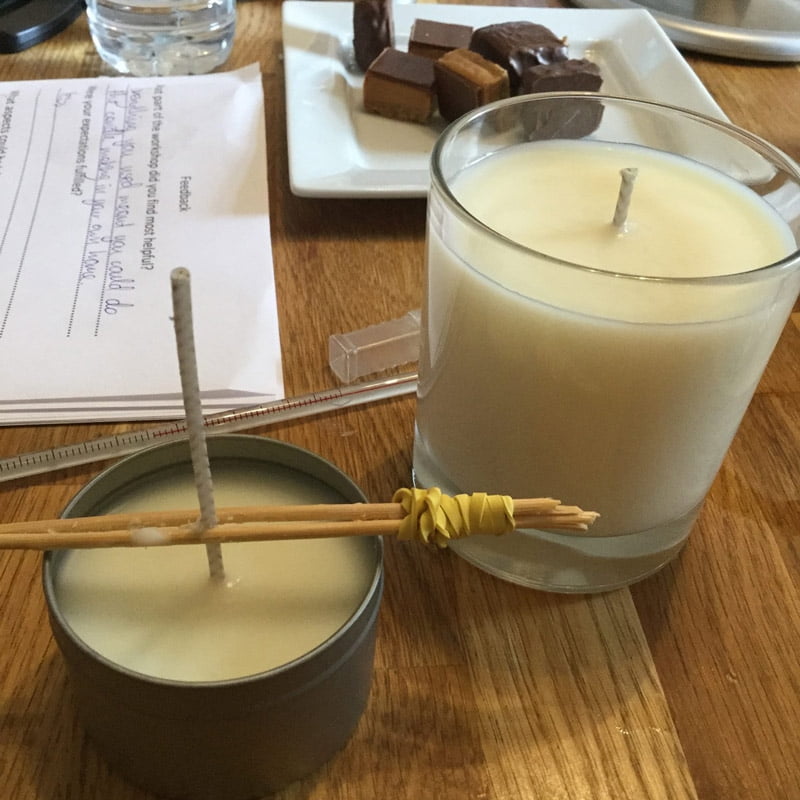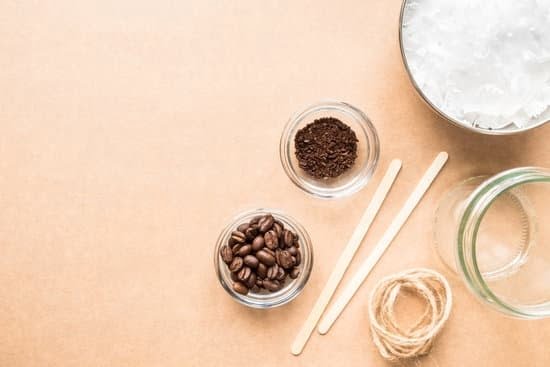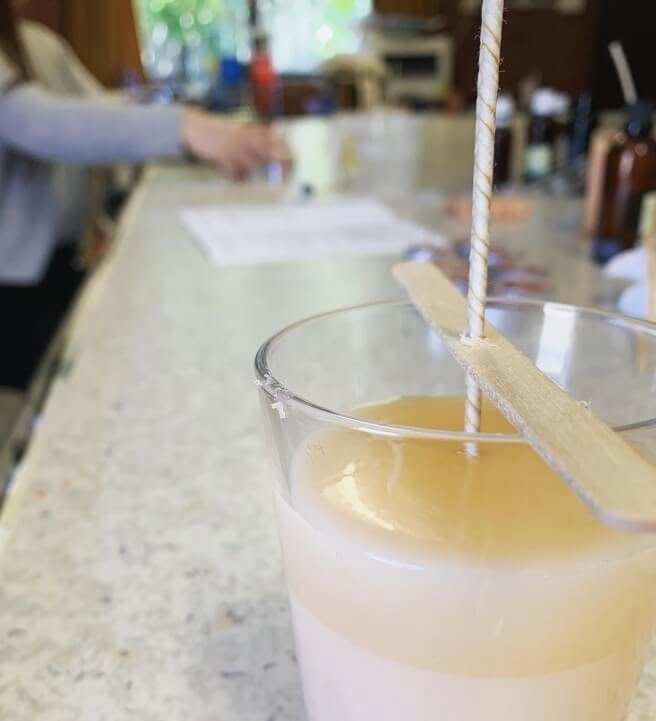Making candle scent involves the delicate art of fragrance creation, where unique combinations of scents come together to create a harmonious and pleasing aroma. Whether you are looking to craft candles for personal use or start a business selling handcrafted creations, understanding how to make candle scents is essential.
The foundation of a great scented candle lies in choosing the right wax, which serves as the medium for carrying and releasing the fragrance into the air. Essential oils and fragrance oils play a crucial role in determining the scent profile of your candle, each offering its own distinct characteristics and benefits. By blending different oils together, you can create custom scents that evoke specific moods or memories.
From selecting the equipment and supplies needed to troubleshooting common scent issues, there are various aspects to consider when making candle scent. This article will guide you through the process step-by-step, providing tips on getting creative with scent combinations and marketing your handcrafted candles effectively. Get ready to immerse yourself in the world of fragrance creation and discover the joy of making your own unique scented candles.
Understanding the Basics
Introduction to Essential Oils and Fragrance Oils
When it comes to making candle scents, one of the crucial decisions that makers have to make is whether to use essential oils or fragrance oils. Essential oils are natural plant extracts obtained through distillation or cold pressing, capturing the essence of the plant’s scent. On the other hand, fragrance oils are synthetic or artificially created scents designed to mimic various smells, ranging from floral tones to dessert fragrances.
Pros and Cons of Essential Oils
Essential oils are favored by many candle makers for their natural origins and therapeutic properties. They provide a more authentic and pure aroma that can have aromatherapy benefits. However, essential oils tend to be more expensive than fragrance oils due to their extraction process and potency. Additionally, essential oils can have a stronger scent throw, which means they may overpower the senses if not properly measured.
Benefits of Fragrance Oils
Fragrance oils offer a broader range of scents than essential oils and are often more affordable, making them popular choices for candle makers on a budget. These synthetic oils also tend to have a more consistent aroma throughout the lifespan of the candle compared to essential oils.
It is important for candle makers using fragrance oils to ensure they are high-quality and specifically designed for use in candles to avoid any potential issues such as poor burn performance or discoloration.
Choosing the Right Wax
When it comes to making candle scent, choosing the right wax is essential for creating a high-quality and long-lasting scented candle. There are several types of wax options available, each with its own unique characteristics that can impact the fragrance throw and burn time of your candle. Here are some popular wax choices to consider:
- Soy Wax: Known for its clean burn and ability to hold scent well, soy wax is a popular choice for those looking to create eco-friendly candles.
- Paraffin Wax: This traditional wax is affordable and provides a strong scent throw, making it ideal for highly fragranced candles.
- Beeswax: With a natural honey-like aroma, beeswax is great for those seeking a subtle scent in their candles while also enjoying the air-purifying properties it offers.
Ultimately, the choice of wax will depend on your personal preferences and desired outcomes for your scented candles. Experimenting with different waxes can help you find the perfect balance between scent retention, burn time, and overall quality of your creation.
Once you have selected the appropriate wax for your candle-making venture, it’s important to consider other factors that can affect the final scent outcome. Factors such as wick selection, fragrance load, and pouring temperature all play a role in how well your candle will release its aroma. By understanding how these elements work together, you can ensure that your scented candles not only smell fantastic but also burn evenly and cleanly every time.
In addition to selecting the right wax and considering key factors that influence scent performance, don’t forget to take into account any allergies or sensitivities that potential customers may have when creating scented candles. Offering fragrance-free options or using hypoallergenic ingredients can attract a wider audience and make your handcrafted creations more inclusive for all individuals looking to enhance their living spaces with delightful aromas.
Getting Creative
When it comes to making candle scent, one of the most exciting aspects is getting creative with blending different scents to create unique combinations. The possibilities are endless, allowing you to tailor each candle to your preferences or create custom scents for specific occasions or seasons. By experimenting with different fragrance oils and essential oils, you can develop signature blends that set your candles apart from store-bought options.
To start exploring the world of scent blending, consider combining complementary fragrances that work well together. For example, mixing floral notes like lavender or rose with citrusy scents like orange or lemon can result in a refreshing and uplifting aroma. Or try combining warm, spicy scents like cinnamon or clove with sweet vanilla for a cozy and inviting fragrance perfect for fall and winter.
Don’t be afraid to think outside the box and play around with unexpected pairings. Sometimes the most interesting and captivating scents come from experimenting with unconventional combinations. By keeping an open mind and trusting your senses, you may stumble upon new favorite blends that surprise and delight both yourself and your customers if you are selling your handcrafted candles. Remember, creating unique scent combinations is all about expressing your creativity and individuality in each candle you make.
Tools of the Trade
When it comes to making candle scents, having the right tools and supplies is essential to ensure a successful and enjoyable crafting experience. There are several key items you will need to have on hand before you can start creating your own unique candle fragrances.
One of the most important tools for making candle scents is a good quality digital scale, as precise measurements are crucial in achieving the perfect balance of oils for your candles. Additionally, you will need a variety of heat-resistant containers for melting wax and mixing scents, such as glass or metal containers.
In addition to a digital scale and heat-resistant containers, you will also need a reliable thermometer to monitor the temperature of your wax and fragrance oils. This will help ensure that your candles set properly and achieve the desired scent throw when burned.
Another essential tool for making candle scents is a stirring utensil, such as a stainless steel spoon or silicone spatula, to mix the fragrance oils into the melted wax thoroughly. Finally, don’t forget about safety equipment like heat-resistant gloves and goggles to protect yourself while working with hot wax and oils.
Having the right equipment and supplies available when making candle scents not only makes the process easier but also allows for greater creativity and experimentation with different fragrances. By investing in quality tools and materials, you can elevate your candle-making skills and produce high-quality handmade products that stand out in the market.
Whether you are a beginner or an experienced crafter, having the proper tools of the trade will help you enjoy the art of creating beautiful scented candles even more.
| Equipment | Supplies |
|---|---|
| Digital Scale | Fragrance Oils |
| Thermometer | Wax |
| Stirring Utensil | Containers |
The Process Unveiled
Making candle scent is a creative and rewarding process that allows you to customize the fragrance of your candles to suit your preferences. To create the perfect scented candle, you will need to follow a step-by-step guide, ensuring that each element is carefully selected and blended to achieve the desired aroma.
Here is a breakdown of the process involved in making candle scent:
- Choose your base wax: Selecting the right wax is crucial for creating a long-lasting and well-scented candle. Soy wax, beeswax, and paraffin wax are popular options that each offer unique qualities for scent retention.
- Select your fragrance oils or essential oils: Whether you prefer synthetic fragrance oils or natural essential oils, it’s essential to choose high-quality scents that will hold up well when the candle burns. Experiment with different combinations to find your signature scent.
- Measure and melt your wax: Use a double boiler or microwave to melt your wax evenly, being careful not to overheat it. Once melted, add your chosen fragrance oils at the recommended temperature for optimal scent throw.
The key to crafting the perfect scented candle lies in experimentation and attention to detail. By following these steps and refining your technique over time, you can create candles that not only look beautiful but also fill your space with delightful aromas that enhance any mood or occasion. Get started on your candle-making journey today and let your creativity shine through in every unique creation you make.
Troubleshooting Common Issues
Understanding Scent Intensity and Scent Throw
When it comes to making candle scent, two important factors to consider are scent intensity and scent throw. Scent intensity refers to how strong or weak the fragrance of the candle is when it is being burned. On the other hand, scent throw refers to how far the fragrance can travel and fill a room. Achieving the perfect balance between scent intensity and throw is crucial in creating a high-quality scented candle.
Adjusting Scent Intensity
If you find that the scent of your candles is too weak or strong, there are several ways to adjust the intensity. One method is to increase or decrease the amount of fragrance oil used in your wax blend. Be sure to follow guidelines from your chosen fragrance oil supplier on recommended usage rates. Additionally, experimenting with different types of waxes can also impact scent intensity, as some waxes hold onto fragrances better than others.
Enhancing Scent Throw
To improve the scent throw of your candles, consider using additives like Vybar or stearic acid in your wax mixture. These additives can help the fragrance oil bind more effectively with the wax, resulting in a stronger overall scent throw. Another tip is to ensure proper wick selection – using a larger wick size can help create a hotter burn, which can enhance scent throw.
Remember that proper curing time for your candles is essential as well, as allowing sufficient time for the fragrance oils to fully blend with the wax can enhance overall scent throw. By making adjustments based on these tips, you can troubleshoot and fix any issues related to scent intensity and throw in your scented candles-making process.
Marketing Your Scented Candles
When it comes to making candle scents, the process of creating unique and captivating fragrances is truly an art form. From understanding the basics like essential oils versus fragrance oils to choosing the right wax for your candles, there are several key factors that come into play when crafting the perfect scent. However, one aspect that often gets overlooked is how to effectively market and sell your scented creations.
Once you have mastered the art of making candle scents and have a collection of beautifully crafted candles ready for sale, it’s important to have a solid marketing plan in place. Whether you’re looking to sell your candles online through e-commerce platforms like Etsy or Shopify, or in physical retail stores, having a strong marketing strategy can make all the difference in reaching your target audience and driving sales.
To effectively market your scented candles online, consider creating high-quality product photos and descriptions that highlight the unique qualities of each scent. Utilize social media platforms to showcase your products, engage with potential customers, and build a loyal following. Additionally, collaborate with influencers or bloggers in the home decor or lifestyle niche to help promote your candles to their audience. By leveraging these digital marketing tactics, you can increase visibility and generate interest in your handcrafted creations.
Frequently Asked Questions
How Do You Make Homemade Candle Scents?
Making homemade candle scents can be a creative and fun process. The most common way to do this is by using fragrance oils or essential oils. You can combine different scents to create unique and personalized combinations based on your preferences.
What Do You Put in Candles to Make Them Smell?
To make candles smell good, you can use various ingredients such as fragrance oils, essential oils, spices, dried herbs, or even extracts like vanilla or almond. These added components are mixed into the melted wax before pouring it into the candle container. The heat from the burning wick helps release these scents into the air when the candle is lit.
What Is the Best Fragrance Oil for Candle Making?
Choosing the best fragrance oil for candle making depends on personal preference and the desired outcome of the candle scent. Some popular options include lavender, vanilla, sandalwood, jasmine, and citrus scents like lemon or orange. It’s important to consider how strong or subtle you want the aroma to be when selecting a fragrance oil for your candles.

Welcome to my candle making blog! In this blog, I will be sharing my tips and tricks for making candles. I will also be sharing some of my favorite recipes.





